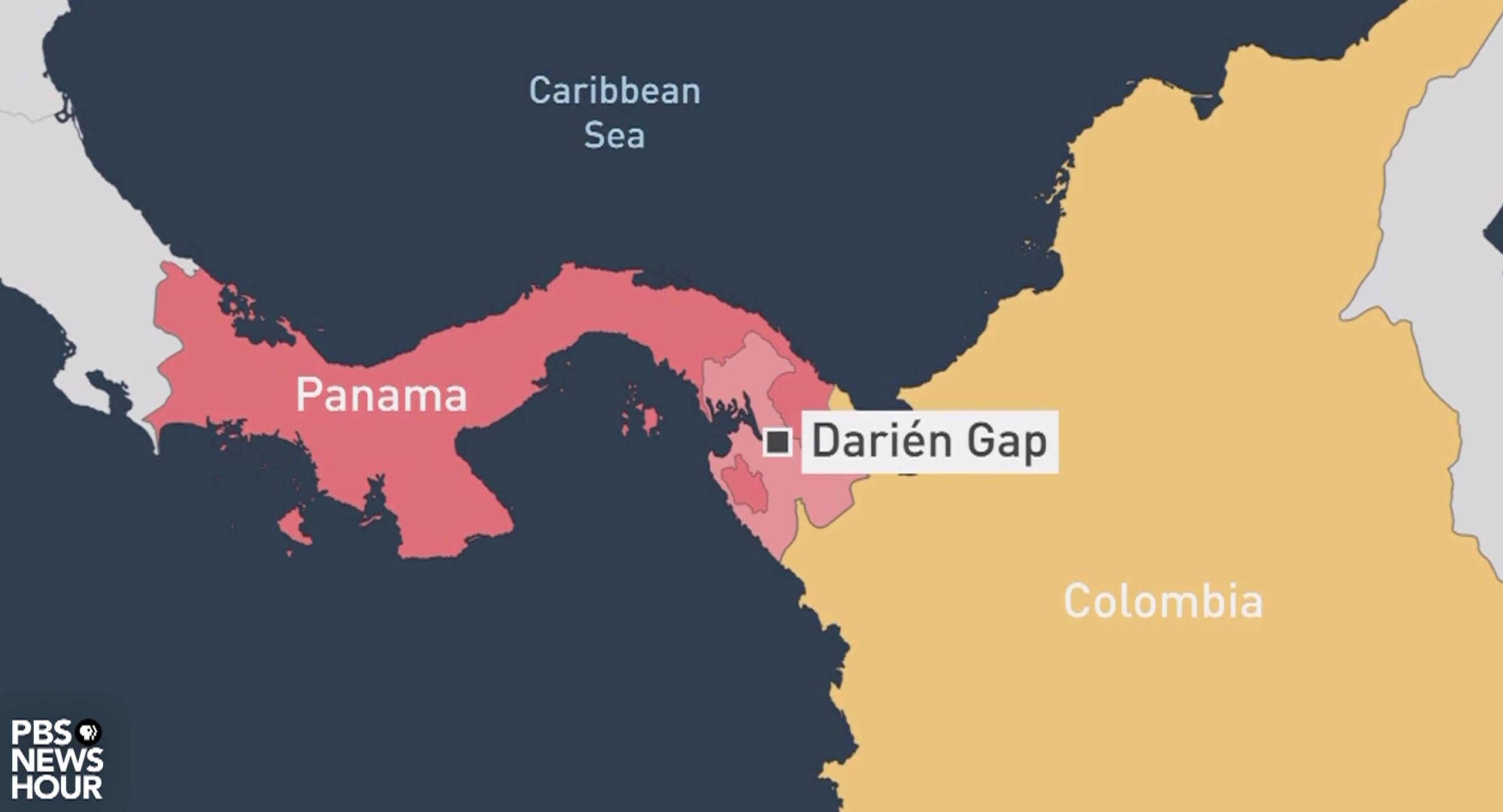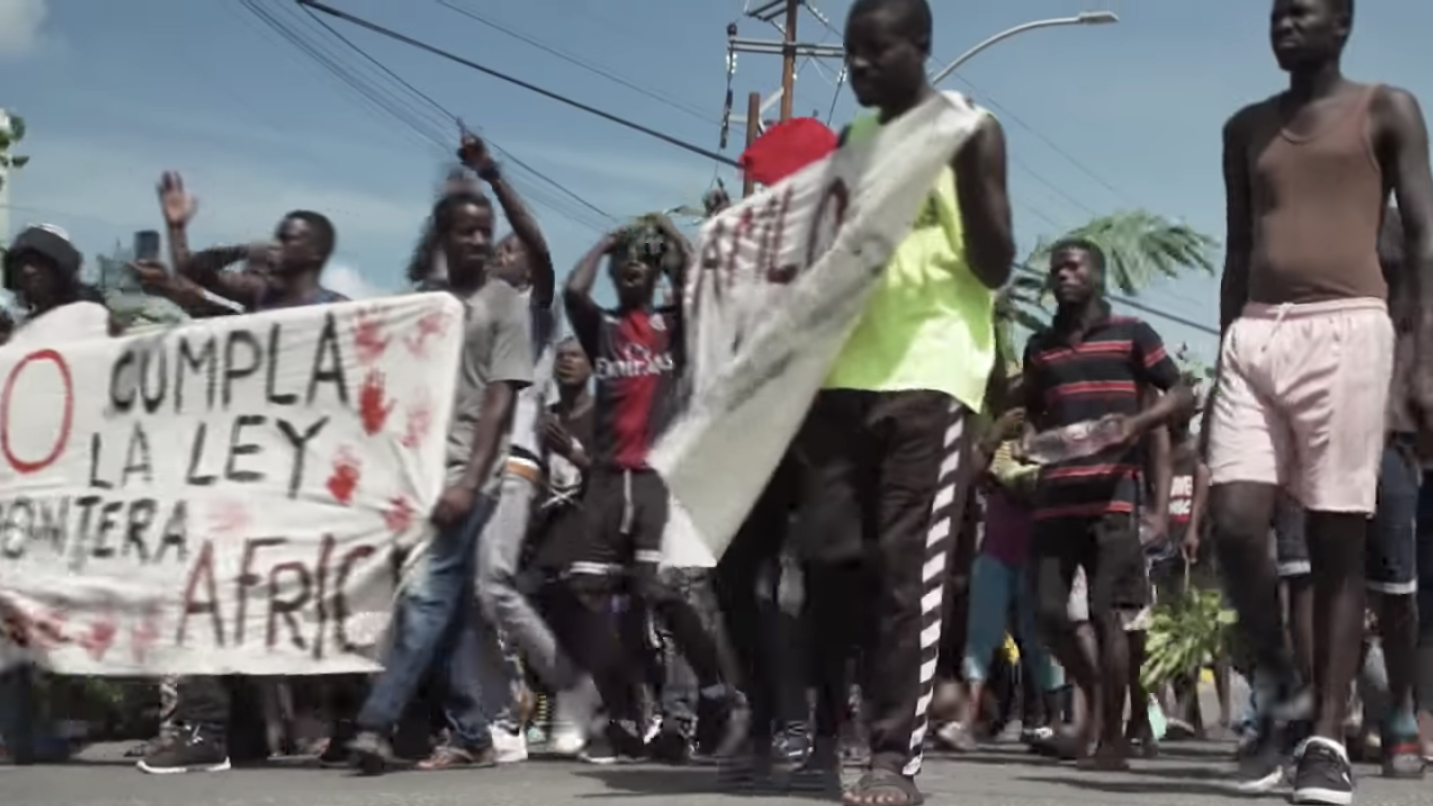
Last August, special correspondents Nadja Drost and Bruno Federico brought us the extraordinary stories of people so desperate to improve their lives they headed through the Darien Gap, one of the most dangerous migration routes in the world. During their reporting, they met people from all over the world, which led to a recent chance encounter in New York City. Nick Schifrin has the story.
Read the Full Transcript
Judy Woodruff:
And now a surprise reunion last weekend in Brooklyn and the long and dangerous road to that moment.
Here's Nick Schifrin.
Nick Schifrin:
Last August, special correspondents Nadja Drost and Bruno Federico brought us the extraordinary stories of people so desperate to improve their lives, they headed through one of the world's harshest places, the Darien Gap, that connects South and Central America on the border between Panama and Northern Colombia.
Along that desperate and dangerous journey, Nadja and Bruno met migrants from Latin America, Africa, the Middle East and South Asia, most fleeing privation, conflict, political persecution, or a combination of all three, and one group in particular, men from Bangladesh.
Fast-forward to last weekend, and those stories intersected with a food delivery in New York City.
And that's where we bring in Nadja, who joins us from New York to pick up the story.
So, Nadja, what happened last weekend?
Nadja Drost:
So, I was at home, and I heard my doorbell ring, and I poked my head outside of my window. I live on the second floor of a house, and I saw a delivery man below.
And I figured that our downstairs neighbors must have ordered food. So I sent him on his way there. And, as he turned to go downstairs, he kind of looked back up at me, did a double-take, and said: "Nadja?"
He told me that the last time we had seen each other was actually on a riverside in the middle of one of the most isolated jungles in the world, the Darien Gap, where Bruno and I had been filming the journey of migrants from all over the world as they tried to cross this jungle from Colombia to Panama.
And I asked him about that moment when he recognized me.
Ripon (through translator):
Then I looked at Nadja's face for once. I have this face in my memory that I saw her in the jungle of Panama. We were together for three days there.
Then, I asked Nadja: "Are you Nadja?"
She replied, "Yes."
Nadja asked me back: "Who are you?"
I replied:
"I was with you in the jungle of Panama for three or four days."
After seeing her, I felt good. That day was extremely amazing to me.
Nick Schifrin:
Now, your first meeting in the jungle came after he'd already traveled an extraordinary distance. Where did he start?
Nadja Drost:
So, he crossed the land border from Bangladesh, where he's from, to India, and took a flight to Ethiopia.
And then he went to Brazil, to Peru, was not allowed out of the airport in Peru, got sent back to Brazil, and eventually made his way via land up through South America.
When I had met Ripon, it was actually on one of the most kind of vulnerable and extreme parts of his journey. And he told me about one of those harrowing experiences where armed bandits robbed him.
Ripon (through translator):
One of them hold a machete here that day. It seemed to me I was supposed to say goodbye to the world.
The truth is that someone held something here, and it was this size sword. One of them held my hands, when the other one said: "Chop it." But someone within them said: "Don't chop."
Everyone with me started crying. They begged: "Don't kill him."
At that time, my feet were wounded, and I suffered lot in the jungle of Panama. I could not believe that I would be able to reach America.
Nadja Drost:
For the next three days, we were walking with over 30 migrants through the jungle, until we reached a settlement in Panama a few days later. And that's the last time that I saw Ripon, until over a year later here in New York City at my doorstep.
Nick Schifrin:
So, Ripon is in New York now.
What's his situation? And what does that say about the larger question of the state of asylum in the U.S.?
Nadja Drost:
So, Ripon is working as a delivery man in New York. And he's trying to get by while he awaits his asylum proceedings.
He came to the United States in a very challenging moment for a lot of asylum seekers, not only because of the pandemic, but over the last few years, the asylum system has really been gutted.
And so what a lot of asylum seekers right now are hopeful is that, with the new administration of Joe Biden, that there may be a lot of dramatic changes that could allow them to settle into a life more quickly and easily in the United States.
Of course, none of these changes are going to happen overnight. So it may be months or even years for us to start seeing really substantive changes to the asylum system.
Nick Schifrin:
Nadja Drost, thank you very much.
Nadja Drost:
Thanks, Nick.





